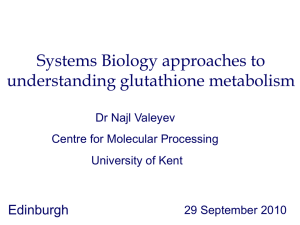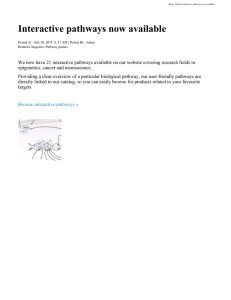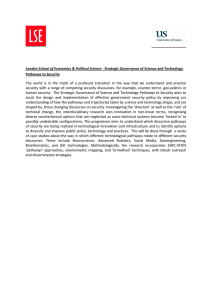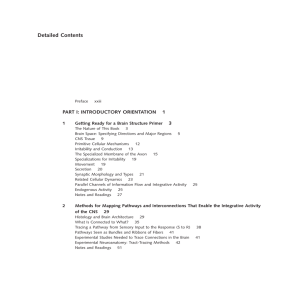9.01 - Neuroscience & Behavior Fall 2003 Massachusetts Institute of Technology
advertisement
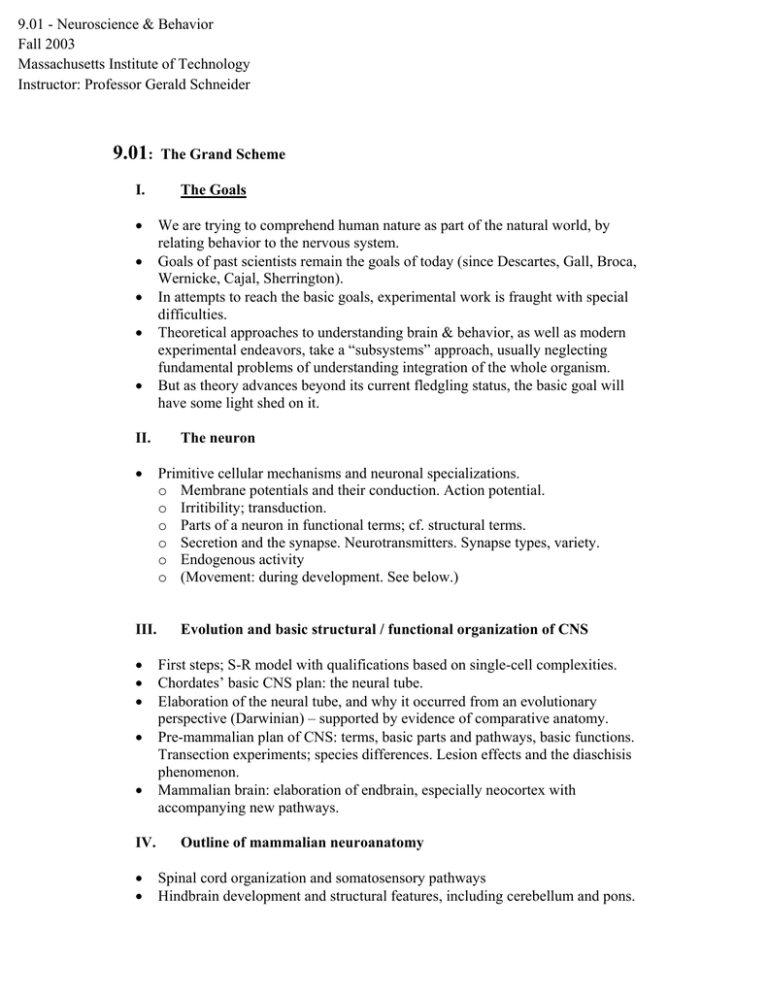
9.01 - Neuroscience & Behavior Fall 2003 Massachusetts Institute of Technology Instructor: Professor Gerald Schneider 9.01: I. • • • • • II. • III. • • • • • IV. • • The Grand Scheme The Goals We are trying to comprehend human nature as part of the natural world, by relating behavior to the nervous system. Goals of past scientists remain the goals of today (since Descartes, Gall, Broca, Wernicke, Cajal, Sherrington). In attempts to reach the basic goals, experimental work is fraught with special difficulties. Theoretical approaches to understanding brain & behavior, as well as modern experimental endeavors, take a “subsystems” approach, usually neglecting fundamental problems of understanding integration of the whole organism. But as theory advances beyond its current fledgling status, the basic goal will have some light shed on it. The neuron Primitive cellular mechanisms and neuronal specializations. o Membrane potentials and their conduction. Action potential. o Irritibility; transduction. o Parts of a neuron in functional terms; cf. structural terms. o Secretion and the synapse. Neurotransmitters. Synapse types, variety. o Endogenous activity o (Movement: during development. See below.) Evolution and basic structural / functional organization of CNS First steps; S-R model with qualifications based on single-cell complexities. Chordates’ basic CNS plan: the neural tube. Elaboration of the neural tube, and why it occurred from an evolutionary perspective (Darwinian) – supported by evidence of comparative anatomy. Pre-mammalian plan of CNS: terms, basic parts and pathways, basic functions. Transection experiments; species differences. Lesion effects and the diaschisis phenomenon. Mammalian brain: elaboration of endbrain, especially neocortex with accompanying new pathways. Outline of mammalian neuroanatomy Spinal cord organization and somatosensory pathways Hindbrain development and structural features, including cerebellum and pons. • • V. • • • • • • • • Midbrain: early links to forebrain; correlation center for spatial orientation and escape from predators; visceral representation and control of stability of the internal mileau (limbic midbrain areas). Forebrain: basic components and pathways: o Early influence and dominance of olfactory sense, then visual and other senses. o Diencephalon (‘tweenbrain): especially hypothalamus and thalamus o Endbrain: olfactory at the beginning; evolutionary elaborations of corpus striatum and cortical structures Limbic components vs neocortical components MFB (medial forebrain bundle) vs LFB (lateral forebrain bundle) pathways as two major outputs of endbrain. (There are fibers oriented in the other direction also.) Development and anatomical plasticity of CNS Neurulation; phenomena of induction Proliferation of cells (ventricular layer; also subventricular layer in neocortex; external granular layer in cerebellum) Migration: three types discussed; probably all involve same basic mechanisms of motility: extension of a process and nuclear translocation within the process. Differentiation: growth of axons, dendrites, synapses; sculpting by cell death or loss of some axonal and dendritic branches. Axonal growth modes (two major ones) Phenomena of plasticity of maps and of connection specificity Factors affecting axon growth and its specificity Phenomena of regeneration and of collateral sprouting (in adults as well as developing organisms) VI. • • • • • • • Motor systems 1: Reflexes and Fixed Action Patterns (FAPs) Reminder: reflexology and S-R model of behavior control Sherrington’s spinal cats Withdrawal reflexes o Polysynaptic: proof in early electrophysiogy experiment, that included a measure of synaptic delay. o Accompaniments: basic principle of reciprocal innervation. Stretch reflexes: the monosynaptic, muscle-to-muscle reflex arc. o Evolution and phylogeny o How it works. Alpha and gamma efferents; alpha-gamma co-activation. o Major function, considering the spring-like properties of muscles: control of muscle stiffness (tone) Propriospinal mechanisms: FAPs of cord; modules of limb movement control. Hindbrain: o Autonomic reflex regulation o Fixed action patterns: e.g., eyeblink, swallowing, emotional displays, etc. Plasticity in reflex connections VII. • Motor systems 2: Descending pathways and higher control Clinical neurology and neuroanatomy: reflex model is common; pyramidal vs extrapyramidal systems (“for voluntary and involuntary movement”) • Critique of these ideas • The spatial layout of motor neurons and corresponding organization of interneurons, and of major descending pathways from brain to spinal cord • Separation of two kinds of control (film: Lawrence and Kuypers): o Control of whole-body movements, especially axial muscles o Control of fractionated movements, especially of distal muscles (fingers) • Cf. cerebellum; role in motor learning • Corpus striatum: o Two major divisions dorso-ventrally; two major divisions mediolaterally. o Pathologies o Role in implicit learning • Other motor systems • (When do you stop calling it “motor”?) ----------------------------------------------------------------------------------------VIII. Rhythms of motor output and general activity IX. Visual system: anatomy and ablation studies X. Visual system: electrophysiological studies XI. Auditory system XII. Somatosensory system (cont’d) and pain XIII. Habituation and arousal systems XIV. Limbic system: mechanisms of drives, motivation XV. Higher functions, neocortex, and human nature

